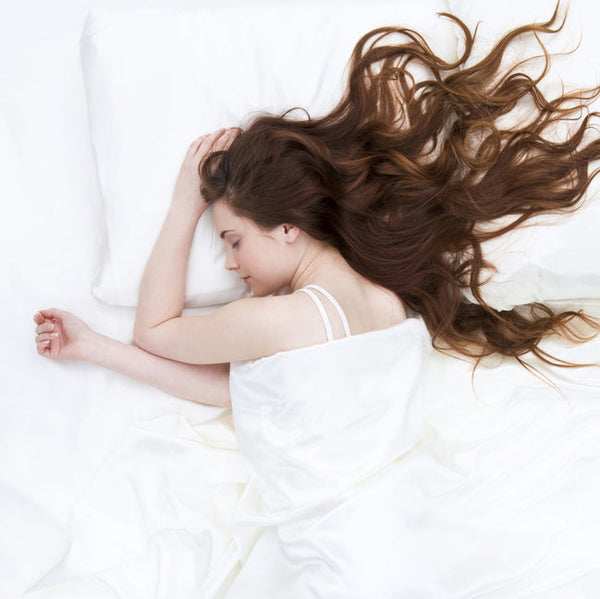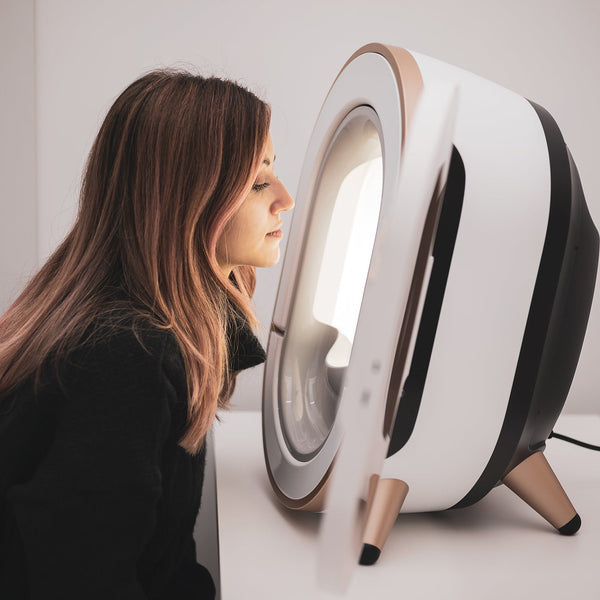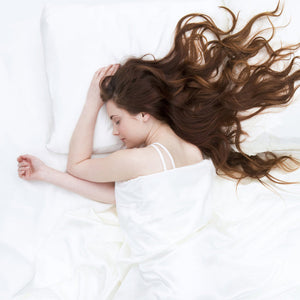Sanitation and Infection Control: How professionals should safe-guard their salon and spa

Sanitation and infection control are some of the first things we learn in beauty school, and for good reason! It is crucial to have an understanding of the different kinds of infections you may come across, in order to protect yourself and the client. Clients rely on our knowledge and professionalism and trust us with their health, so we must abide by the law by giving them the best treatment without taking shortcuts.
With that said, spa and salon workers must be aware of contagious bacteria, fungi, parasites, and viruses that can be contracted through broken skin, posing serious health risks. Not only should we treat all clients with care to avoid getting them sick, but we must also protect ourselves in the workplace. Since the body’s first line of defense is unbroken skin, take care of your hands – they are your tools, so do not bite your fingers or pull on your cuticles. Keep your nails short to avoid scratching the client’s face or breaking and snagging a nail by accident.
Keeping your treatment room ventilated and clean is extremely important, especially having clean sheets and towels. Be sure to wipe down all surfaces and keep all equipment and implements that come into direct contact with the client immaculate. Develop a habit of doing laundry daily because mold and fungus may grow on unwashed laundry left in the hamper.
I would like to reinforce the difference between sanitizing, disinfecting, and sterilizing. Understanding the basics of disinfecting and following state laws will ensure that you are protected.
Sanitation (cleaning) is removing all visible dirt with soap and warm water and using a brush to scrub grooved or hinged portions of implements.
Disinfection destroys most harmful organisms, but is not effective against bacterial spores.
Sterilization completely destroys all microbial life, including spores. When disinfecting and sterilizing, make sure to take proper precautions such as wearing gloves when touching the disinfectant solution and following the instructions on the label. Disinfectant solution should be changed daily or right away if it becomes contaminated.

For Skin Care Professionals
As aestheticians, we see many different clients daily, some with serious cystic acne. Over the years, I have noticed that treating acne is a passion of mine and I can proudly say that I specialize in working with acne-prone skin. Personally, I do not use any tools other than my fingers wrapped in tissues to perform manual extractions, and I always wear gloves when working on acneic skin.
Gloves are important every time you come in contact with a client’s blood, bodily fluids, secretions, excretions, non-intact skin, and mucous membrane. This is a standard precaution where you must assume that all blood and bodily fluids are potential sources of infection such as staph, Methicillin-Resistant Staphylococcus Aureus (MRSA) infection (caused by a strain of staph bacteria resistant to antibiotics commonly used to treat ordinary staph infections), hepatitis, and even HIV. I also use a magnifying lamp when performing extractions, so any excretions or puss (which may accidentally spew out during the extraction process) will not get on my face or in my eyes. If accidental exposure to blood or excretions occurs, you must stop the service and perform the correct measures to clean and disinfect the broken skin area, clean and disinfect the workspace, and dispose of all used implements. All tools that come into contact with blood or body fluids must be disinfected in an Environmental Protection Agency (EPA) registered tuberculocidal disinfectant (a disinfectant that kills HIV 1 and hepatitis B virus).
When sanitizing and disinfecting non-electrical tools and implements:
- Wear protective glasses and gloves.
- Rinse implements and thoroughly clean them with soap, a brush, and warm water.
- Dry thoroughly with a clean towel or air dry on a clean towel.
- Immerse implements in the disinfection container with an EPA-registered hospital grade disinfectant that is bactericidal, fungicidal, and virucidal for 10 minutes.
- Remove implements with tongs or gloves, rinse well in warm water, and pat dry.
- Store in a clean, labeled, and covered container until needed.
- Remove gloves and wash hands.
Clean electrical components that come in contact with clients (like high-frequency electrodes) in the same manner as non-electrical tools, but be sure not to immerse metal tips in water/disinfectant solution. Also, having an autoclave (equipment that sterilizes tools by using steam under pressure) in the spa or salon is very useful.
Waxing
Another important service that must be performed with utmost care is waxing. No matter what anyone else tells you, gloves are essential any time during contact with a client’s blood, bodily fluids, secretions, excretions, non-intact skin, and mucous membrane. You must assume that all blood and bodily fluids are potential sources of infection. It is especially important to wear gloves when performing Brazilian/bikini waxing, when the follicles are left open and can bleed, especially because that area has thick, coarse hair. In addition to any unknown bloodborne pathogens that may be transmitted via open pores, if you have any cuts or broken lesions on your fingers and do not wear gloves, there is a possibility of contracting herpes through broken skin.
Correct use of spatulas is very important during waxing. Be aware that hairs, as well as dry or dead skin may get into the wax container if you double-dip, so do not keep using the same spatula throughout the service. The wooden tongue-depressors we use for waxing cost pennies, if even that! They are meant to be 100 percent disposable after one time use, so do not double-dip – just toss it and use a new one.
Make cleanup easy after waxing by using a disposable roll of waxing paper (just like you would see at your doctor’s office) over your sheets. Not only will it save your sheets from sticky wax, but it will give your clients the assurance that they are lying on a 100 percent clean surface.

For Nail Technicians
Having a well-ventilated room at all times in which to work is of utmost importance for nail technicians, since workers may breathe in harmful vapors and dust from nail products. Even in small amounts, these chemicals add up in the body and may cause serious health problems.
The Centers for Disease Control and Prevention (CDC) and Occupational Safety and Health Administration (OSHA) consider the exposure to chemicals to be a serious health concern for nail technicians and salon workers. Nail technicians are exposed daily to toxic chemical ingredients in nail polish and remover, nail primer, nail glue, remover, nail hardener, and artificial nail liquid. Such ingredients as acetone, Butyl acetate, Methyl methacrylate, Toluene, formaldehyde, ethyl acetate, and dibutyl phthalate have been linked to allergies, cancer, and birth defects, according to various studies. Along with proper ventilation, workers must wear N95s NIOSH-approved dust masks (filtering face-piece respirators), and become familiar with all the chemical present in their workplace. The OSHA provides a mass of information on their website.
A great way to reduce exposure to chemicals is by shopping for natural nail care products, which do not have the “toxic trio” of toluene, formaldehyde, and dibutyl phthalate. Manufacturers will proudly tell you this information on their labels, so research before making any purchases!
Since manicures and pedicures require trimming and cutting cuticles and nails, nail technicians run the risk of piercing the skin and coming in contact with infected blood, which can carry bloodborne pathogens such as hepatitis or HIV. There is also a very high risk of contracting fungal infections, such as athlete’s foot. Working with gloves and sterilizing all implements reduce the likelihood of infection. In addition to following all sterilization procedures for implements, remember that proper disinfection of a whirlpool pedicure spa requires the disinfecting solution to circulate for 10 minutes.
For Hairdressers
Generally, all salon workers should keep their area ventilated – nail technicians and hairdressers alike. Similarly, precautions must be taken when working with potentially toxic products daily. I once met a hairdresser who applied color without wearing gloves, which was rather surprising, to say the least! Our skin is the largest organ of our body and if it has the ability to absorb color in a few seconds, think of what else your body is absorbing. When working with chemicals, be sure to follow the manufacturer’s exact directions and perform a patch test on yourself before starting to work with unfamiliar products. If you, as a hair stylist, have a known allergy, check the ingredient list for the allergen to be sure you are not poisoning yourself every time you are using this product on clients (this could be daily). You can always request a material safety data sheet (MSDS), which contains complied information by the manufacturer about product safety, including names of hazardous ingredients, safe handling and use procedures, precautions to reduce the risk for accidental harm or overexposure, and flammability warnings. Be sure to unplug all electrical hair tools when not in use and wear proper gloves when using curling irons that do not have clips.
Nourishing Your Beautiful Body
Even though we all love what we do, and sometimes work too many hours, we should remember that health comes first! Be sure to keep hydrated throughout the day by drinking an abundance of water. This also flushes out your system and helps your blood flow without stagnation. Proper nutrition is very important, so indulge in fruits and vegetables, especially garlic, ginger, onions, shitake mushrooms, maitake, reishi and cordycepts (all available in supplement form) that ward off infection and keep up the immune system. Vitamins such as vitamin C (1000mg), vitamin D3 (5000IU), and B-complex are important, as well as a calcium/magnesium ratio of 500mg/1000mg. Additional supplements that promote good health are omega-3 (EPA + DHA), and folic acid.
As hairdressers, aestheticians, makeup artists, massage therapists, and nail technicians, we spend a lot of time on our feet and use our hands in repetitive motions daily. Take time to relax yourself and stretch as often as possible. Use Methylsulfonylmethans (MSM) to maintain healthy joints and connective tissue, and see a doctor any time you feel pain in your wrists or back; ignoring your body’s symptoms could lead to complications down the road. Keeping healthy is the key to enjoying many years of professional and personal success! When you are healthy, you have the energy to give your clients the best service and they will absolutely feel it in your touch! Take pride in your profession and your knowledge! Love your work and every task that goes with it. Feel gratitude for having an opportunity to make others beautiful and healthy, and life will reward you with good health and an abundance of clientele!









